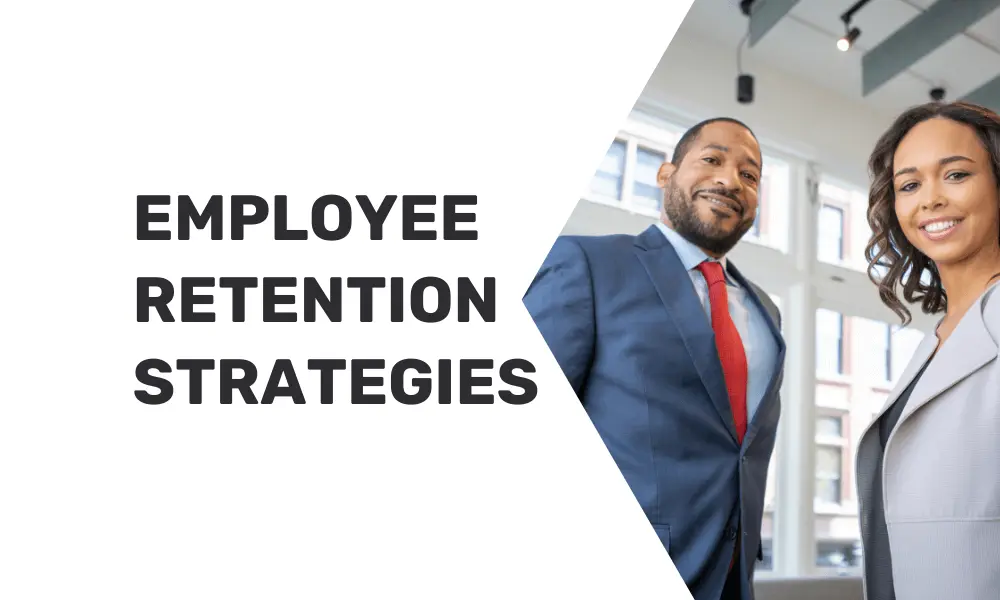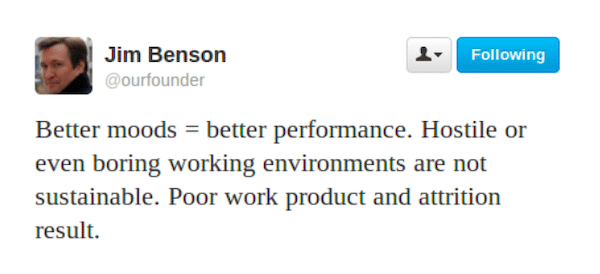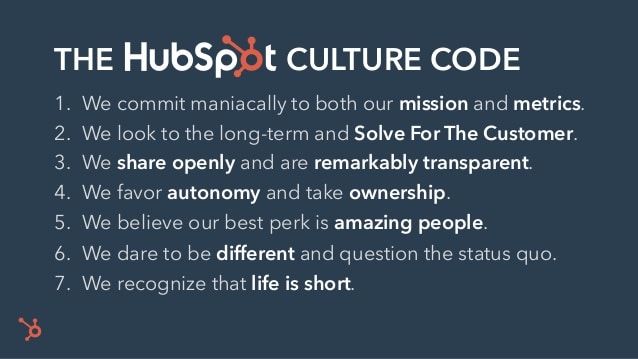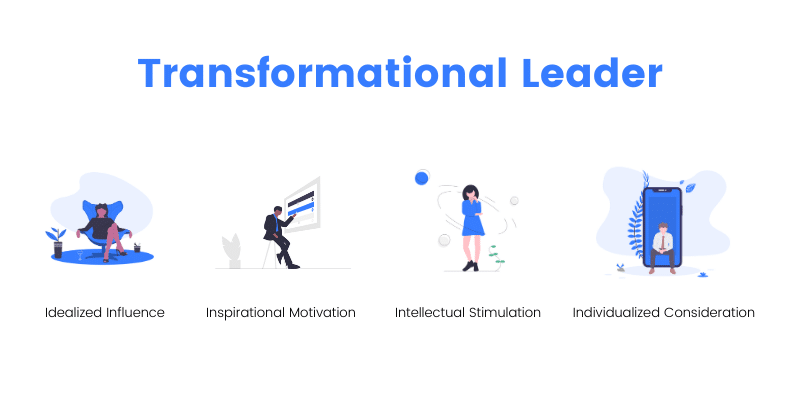Best Employee Retention Strategies | Guide

Effective employee retention strategies minimize turnover rates.
Smart business owners and HR managers focus on the onboarding process and the employee experience to create job stickiness and save money and time, attracting top talent and turning them into long-term, engaged employees.
Here are some numbers to grasp:
- 75% of the US workforce doesn’t stay in the same job for more than five years.
- Voluntary severance can cost the company 33% of the annual salary of the employee.
- Small business owners spend nearly 40% of their time on non-business engagements like the hiring process.
- US firms forfeit almost $1 trillion annually due to voluntary job changes and high turnover.
What does it mean?
Big corporations have deeper pockets to tackle this problem, but it could sound the death knell for small companies.
They already have to work under the constraints of limited resources to stay afloat in the highly competitive US and global markets.
Now, they have to look at recruiting effective hiring managers, offering competitive salaries, and keeping those new team members on board with mentorship and development opportunities.
Even if you find the right candidate, it takes them between 8 to 26 weeks to reach optimum productivity levels!
Meanwhile, you’re losing money.
Despite all this, investing in cutting down employee turnover will save money for your business.
Today, we’ll look at some employee retention strategies to prevent unnecessary expenditures.
Try Buddy Punch For Free
Hire People With The Same Core Values
The first step in keeping employees is to hire the right person for the job.
Lawrence Bossidy, a successful entrepreneur and author, once said, ‘At the end of the day, you bet on people, not on strategies.’
While every employer focuses on hiring a person who is a technical fit, it’s equally important to hire people who mesh with your company’s values and work arrangements.
Your company’s core values and culture are your brand.
The goal of team building is to cultivate initiative and promote teamwork, both of which are easily achieved when people share similar mindsets.
Some of you must be thinking that core values won’t matter as long as people do their job.
However, employees’ mindsets and perspectives are more important than you think.
From the employees’ perspective, 79% of US workers say there’s a high correlation between job satisfaction and culture fitness.
Once the core values of the company and employee match, there’s very little that could go wrong.
Come to think of it, if an employee feels that they agree with your company’s core values and culture, they’re going to find the work environment less hostile and feel more comfortable working there.
The book ‘Who’ by Smart and Street succinctly brings out the value and long-term impact of hiring someone with matching core values and describes strategies for hiring the right talent.
That could mean radically changing how you hire people in the first place.
Instead of having questions and assignments based merely on the skill, put adequate emphasis on understanding the candidate in the flesh.
Revamp your questionnaire to get insights into the personality of the applicant.
Some of the questions that might help you hire the right candidate are:
- What motivates and drives you through the day?
- What made you apply for the position here?
- What do you see in this opportunity?
- Where do you see yourself 5 and 10 years from now?
- Why do you want to leave your current job?
- What are some of your shortcomings, and what are you doing to overcome them?
- What’s an ideal work-life balance to you?
While these questions are common in an interview, you should use them to assess if the candidate’s answers and personality fit your company and specific role.
Another great way to hire the right talent is by catching them off guard and asking them questions they don’t expect.
Since most candidates prepare well before coming for an interview, don’t judge them only based on conventional questions.
Instead, keep them guessing!
For instance, you can ask questions like,
- ‘What were you thinking about while making the trip here?’
- or ‘What do you feel about the room we’re in?’
A spontaneous response can offer great insight into the thought process of the person easily.
Over 82 per cent of recruiters believe measuring cultural fit is important, as an international study by Cubiks showed.
The major problem for business managers of today is clearly defining their core culture, which 46% of companies don’t do.
People you hire to work in your company are your biggest representatives.
Consider a scenario where you meet someone, and they tell you about where they work and how things transpire in the company they work in—your perception automatically changes based on what that person says.
Hiring employees that fit your company’s culture is essential for them as well as for company growth.
Additionally, business managers must ensure they attract the right talent to apply for the interview in the first place.
Include Culture And Core Values In Your Job Ad
A great way to start is by adding the right keywords and changing how you advertise.
Here’s an example:
Let’s say you’re on Glassdoor or LinkedIn looking for someone with three years of sales experience for the Area Business Manager role.
But you also want someone responsible, customer-centric, resourceful and has leadership traits.
In this scenario, make sure that your job advertisement is not limited to the talk of management or sales experience only.
It’s also important to mention that you are looking to hire someone who enjoys responsibility, wants to lead a team, and is ready to take ownership of the business.
Also, describe the job role as precisely as you can so candidates can see if this role fits their needs and wants.
Ready to give Buddy Punch a try?
For free trial, no credit card required.
How Zappos Hires Right Employees by Paying Them to Quit
Zappos.com CEO Tony Hsieh uses a unique technique to hire employees that match their company’s core values.
He used a 4-week company training that ensures they almost always hire the right person.
He offers an additional $2000 plus 4 weeks of the employee’s salary for the time they’ve worked to quit and walk away from Zappos. The offer stands till the training ends.
In the end, they gain some of the most focused, driven, and culture-fit employees who want more out of their jobs than just money.
These people are certainly less likely to develop burnout or quit because of a change in their career path.
Help New Hires Develop an Emotional Connection With Your Company In The Onboarding Period
Even when you hire for culture, employees and employers only know a little about each other once they actually join full-time.
Great companies pitch in and make an emotional connection with employees at the onboarding stage, where employees are most vulnerable and are just learning the basics of a new job.
Onboarding presents the first opportunity where companies to display their leadership, culture, and the way they collaborate with their employees.
Most Fortune 500 companies enhance employee retention and curb turnover by focusing on three critical emotional connection areas during the employee’s initial period within the company:
#1 Organizational Onboarding
You must talk to employees about a typical day at the office.
For this purpose alone, you can organize a buddy system so a current employee can communicate small things to the new hires, like telling them where to park the car, how to sign up for insurance, where the nearest toilet is, and more.
Teach them the jargon you throw around in the workplace that they cannot know. If you have an internal lingo and use terms specific to your processes and roles—you must decode it for them.
The sooner they settle, the faster they’ll feel at ease.
Proper two-way communication is the right way to help employees assimilate.
The businesses must engage new hires in conversations and help them understand the mission and vision of the company and how vital their role is going to be in achieving them.
Help employees understand how their performance will be reviewed and rewarded and what must happen for growth opportunities to arise.
Talk about their career roadmap which boxes they need to tick to get from X to Y in Z number of years.
#2 Technical Onboarding
60% of companies don’t set short-term goals for new hires—which is a mistake to avoid.
Providing short-term goals for new hires helps them bridge the gap between the job responsibilities in their previous organization and those in the current one.
For the best results, make sure that you set short-term goals that are SMART.
As a new employee completes a set goal, their level of associated responsibility increases.
There are other associated benefits with goal setting:
- Employees self-identify a lack of particular capabilities (if any) and can look to improve in that area
- Employees understand their job description and relevant expectations better
- Builds trust between new hires and other employees
- New employees understand they’re part of a system and a vital cog
Moreover, holding review meetings once every quarter or more frequently helps solidify the emotional connection between the new hire and the company.
It positively impacts employees and makes them want to emulate that feat and contribute to the company’s cause. Of course, employees should not be afraid of performance reviews, so it’s essential how you implement them.
Performance reviews should be more about them; in other words, they should provide constructive feedback and aim to educate and help employees strive in your organization.
All these factors can come together and spur the candidate.
#3 Social Onboarding
If statistics are anything to go by, over 60% of Americans think they’re lonely. This is analogous to the feeling of new employees when the organization lacks a social structure.
Employees with low levels of autonomy and power were more prone to feeling lonely—and loneliness at work hampers well-being and productivity.
That’s why you must help new hires make fruitful relationships at work.
Encourage them to connect one-on-one with their peers, bosses, and subordinates and build social capital.
When employees build relationships at work, they no longer feel awkward and self-conscious and can contribute more.
Social onboarding improves employee value and, in turn, minimizes employee churn.
Show Them a Great Culture They Are A Part Of
Businesses must not use their culture only as a selling point to attract great workers. They must live it every single day.
Firms that strive to achieve their mission and vision every day and adhere to their culture have a positive psychosocial impact on employees.
Employees in these firms want to contribute more than their counterparts in other organizations and are ready to take greater responsibility for the business.
Here’s an example of how Salesforce uses social media to build relationships with their employees:
Social media is a platform that Salesforce puts to great use to showcase positive reinforcement of its famous cultural values like ‘employees first,’ trust, and collaboration.
Salesforce isn’t only able to attract people who fit the bill—by living their culture—they are also able to maintain high employee retention rates.
As a result, their employee retention rate to date is a whopping 91%—which is a massive achievement.
So how does Salesforce’ live’ their culture day in and day out while other companies struggle?
A Fortune’s survey revealed some of it.
According to the survey, Salesforce abides by the following:
- Salesforce scored 95% or above in essential areas like ‘pride,’ ‘communication,’ ‘atmosphere,’ ‘rewards,’ and other similar areas that are most likely to attract the best talents.
- It uses a dedicated feedback app to make sure every employee has a medium to express themselves. It collects real-time feedback and provides instant gratification to employees when their voices are heard.
- Offers a unique ‘Volunteer Time Off‘ scheme, where employees are eligible for seven days of fully paid leave for community volunteering & work.
Salesforce’s ‘practice what you preach‘ attitude doesn’t only make it a great place to join but also a place that is extremely hard to leave. That’s why they managed to keep turnover numbers down.
Plenty of companies across the USA are following suit.
Let’s look at CB Insights, for example.
The company never misses a chance to highlight its adherence to the 4H culture— helpful, hungry, happy, and humble—which is epitomized by every single employee all the time.
In fact, to stress how hungry employees should be to experiment and innovate, the CEO has made public a list of his own mistakes, highlighting how he learned from them.
HubSpot is also notoriously famous for swearing by its unique Culture Code.
.
If interviewees for a position do not demonstrate abilities like transparency, openness, experimentation, and the need for autonomy, they are seldom selected.
Updater.com is another company that rates culture fitness very highly and actively seeks out such employees.
Most of them share a resounding love for dogs, and you’ll rarely find an employee from Updater who doesn’t like pets.
When companies keep their promises and swear by their culture, the trust between employers and employees deepens, and people rarely leave.
Mentor and Lead Continuously
Most employees in today’s companies are Generation Z people—a quarter of the global workforce.
They crave truth, want individual expression, and believe in dialogue & analytics to solve problems.
Moreover, they have an innate need to prove themselves and be respected.
With their numbers rising in every company, firms must figure out ways to cater to their wants and needs to turn them into essential business assets.
For one, Gen Z employees don’t care about the rigidity of shifts and are ready to work even the odd hours. On top of that, most of them are willing to take innovative risks for their businesses – that’s why companies must find ways to channel their inner drive to prove their mettle.
To make the most of them, business managers must be proactive and lead from the front. They must exhibit exemplary superintendence that attracts Generation Z to work in a dynamic environment.
Today’s generation isn’t afraid of failure either – they want to learn from it, and continuously get better.
That’s where they differ from the millennials, who tend to change jobs every two years. The current generation, on the other hand, stays on a job much longer, takes ownership, and wants to put things right.
To make them stay, business and HR managers must mentor and help them with more exciting tasks that will not only hone their skills but will also challenge them and provide meaning to their lives as a whole.
Ready to start a free trial?
No credit card required, all features included.
Be a Transformational Leader
Transformational leadership can bring out the best in employees. In a workplace where everyone is vying for recognition, it can make all the difference.
The most effective transformational leaders:
- Emphasize authenticity and communications
- Foster an environment of moving above self-interests and entice looking at common targets
- Set high standards of professionalism and expect the same from their employees
- Encourage intellectual stimulation
- Provide continuous coaching & mentoring to employees
- Provide constructive criticism and help with constant learning & development
- Offer career advancement opportunities to employees
Business leaders like Jeff Bezos of Amazon and Mark Bertolini of Aetna are practitioners of transformational leadership and have revolutionized the way business is done.
Here are some of the essential aspects of transformational leadership:
Let’s take the example of Netflix, another pioneer in this style of leadership.
Employees are a big part of any decision-making process at Netflix and have the full backing of their managers. These types of employees can become 4.6X more productive than they usually are.
Netflix’s focus on the ‘freedom and responsibility’ of each employee helped it become the world’s largest subscription streaming service.
The employees today want attention, feedback, and increased responsibility— they help them grow.
The most exceptional leaders understand their need for validation.
Regular one-to-one meetings with line managers or human resource managers are a great way to do that.
With low employee retention rates being a big problem in the industry, firms are also moving towards participative leadership to tackle this issue.
These leaders encourage employees to ask questions, come up with business solutions individually, and take on additional tasks.
Even if leaders can’t take time out to mentor them, they appoint a senior company figure to do it.
Once employees feel valued in a company, their performance drastically improves, and employee turnover takes a dip.
Compensation & Perks
The reason that most people quit their jobs is not due to compensation issues or lack thereof. 75% of the time, people quit a job boils down to their manager.
Gallup found that only 22% of employees exited a company citing salary issues. Another research found that on the ground, only 12% leave a company for a pay rise.
Career growth opportunities occupy a pole position in the list of reasons to switch jobs.
To stop employees from switching to another company, the first thing to do is offer them the growth path they crave.
An empathetic boss who listens to employees can drastically reduce employee turnover— according to 96% of employees.
Business managers of today must look at the psychosocial aspect of their employees.
Generation Z, the first generation born in the digital world, is poised to be the most productive workforce the world has ever seen. You need to handle them with care and meet their expectations.
Does that mean that compensation and job security aren’t important? Not at all.
Generation Z grew up in a world reeling in the aftermath of the 1998 Nairobi bombings, the 9/11 attacks, and a global recession in 2008-2009.
They value stability, desire job security, and understand the importance of money.
While they may not leave jobs simply because of money, they will if their paychecks don’t rise at a steady rate over time. Be transparent about their work hours and compensation. Streamline this process with digital time clocking to improve accountability and transparency on both sides.
They are ready to work for you at the right price, but you don’t have to shell out a fortune to retain your best employees.
The employee of today is outgoing, adventurous, and fun-loving. They value family time as well as alone time.
84% of working parents choose flexibility as their number one lookout in a job. Why not appeal to this side of your employees?
Offer them perks like:
- Gym and club memberships
- Work from home
- Paid leaves
- Movie and opera tickets
- Discounts at restaurants
- Flexible work options.
Also, consider emphasizing employee recognition. Implementing a strategy for rewarding team members for exceptional work will boost employee satisfaction and productivity, and best of all – it can be completely free.
Simple programs like Employee of the Month work well for this, though the type of program you want to use will vary depending on your business.
Bottom line, not only will you earn your employees’ trust and goodwill, but you will also build a marketable brand image.
Companies are going beyond the basics of health insurance and retirement plans. They now provide wellness programs, flexible work arrangements, childcare support, and paid family leave.
Additionally, educational assistance, career development opportunities, and skill-building workshops are being offered to employees who seek growth.
Highlighting these comprehensive benefits and perks can set your organization apart and enhance employee loyalty.
Here are some key components of maximizing employee benefits and perks:
| Wellness Programs: Many organizations are investing in wellness programs to promote physical and mental health among employees. These programs can include fitness classes, access to mental health services, and stress management resources. Flexible Work Arrangements: In the era of remote work, providing flexible work arrangements is crucial. Employees value the ability to balance work and personal life effectively. Educational Assistance: Companies are supporting employees in their pursuit of higher education or additional skill development. Whether it’s through tuition reimbursement, online courses, or workshops, these opportunities show a commitment to employee growth. Childcare Support: Offering assistance or on-site childcare facilities can significantly ease the burden on working parents. Paid Family Leave: Family-friendly policies like paid parental leave help employees maintain a healthy work-life balance. |
Employee retention is a multifaceted challenge that extends well beyond the realm of salaries.
To bolster employee retention ideas and foster a thriving workplace culture, organizations need to adopt a holistic approach that takes into account a variety of factors.
Flexible schedules, especially in the post-pandemic workday, can be a game-changer.
Offering the option for employees to work in person or remotely, catering to their individual needs, can significantly boost employee retention.
Moreover, companies that invest in healthcare, incentives, and recognition programs, including stipends or additional benefits, not only enhance employee morale but also demonstrate a commitment to their well-being.
In boosting employee retention, employee development and growth opportunities play a pivotal role.
Employees are likelier to stay with organizations that invest in their career progression and offer training programs.
When employees witness their professional journey being nurtured, they are inclined to remain loyal to the company, contributing to enhanced profitability over time.
However, it’s equally essential to pay attention to the feedback and sentiments of departing employees.
Their insights can provide valuable information for improving retention strategies.
By addressing the specific reasons employees decide to leave, companies can develop more effective plans to retain top talent, ensuring a thriving workplace culture and long-term employee engagement.
Employee Retention Statistics and Insights
Average Job Tenure: According to the Bureau of Labor Statistics, the average job tenure in the United States is approximately 4.1 years.
This statistic highlights the reality that employees often seek new opportunities, making it essential for employers to focus on retention strategies.
Voluntary Turnover Costs: Voluntary turnover can be costly.
Research shows that it can cost an organization up to 33% of an employee’s annual salary to replace them.
This figure includes expenses associated with recruitment, onboarding, training, and lost productivity.
Time-to-Productivity: On average, it takes a new employee between 8 to 26 weeks to reach optimum productivity levels.
During this period, businesses may experience reduced efficiency and increased costs.
Culture and Job Satisfaction: A whopping 79% of U.S. workers believe there’s a high correlation between job satisfaction and cultural fit within the organization.
This highlights the importance of aligning core values and work culture with employee expectations.
Global Impact: While larger corporations have more resources to address high turnover, it poses significant challenges for small and mid-sized companies.
The impact of high turnover extends beyond financial costs, affecting overall productivity and competitiveness in the global market.
Try Buddy Punch For Free
Career Growth Opportunities
To foster long-term employee commitment and satisfaction, it’s imperative for businesses to offer a clear and attractive career path.
While we discussed the significance of offering a growth path in the previous section, it’s worth delving deeper into what this entails.
Here are some key components that companies should consider:
1. Individual Development Plans (IDPs)
Encourage employees to create Individual Development Plans to map out their professional goals and chart a course for career progression.
IDPs can be tailored to each employee’s unique skills and aspirations, aligning personal growth with the organization’s objectives.
2. Skills Development Programs
Businesses should invest in training and development programs that help employees acquire new skills or enhance existing ones. This could include industry-recognized certifications, technical training, or exam preparation resources like Cisco CCNA Exam Dumps for IT professionals.
This not only equips them for their current roles but also prepares them for higher-level positions within the company.
3. Leadership Training
A strong leadership pipeline is essential for any organization’s sustained success.
Identify potential leaders within your workforce and provide them with leadership training, mentorship, and opportunities to step into leadership roles.
4. Clear Promotion Criteria
Establish transparent promotion criteria, so employees know what is expected of them to advance within the company.
This clarity reduces ambiguity and fosters motivation to excel.
5. Regular Progress Reviews
Implement regular progress reviews, ideally on a quarterly or semi-annual basis.
These reviews provide a platform for managers to discuss an employee’s career goals, provide feedback, and align their development with the company’s growth trajectory.
People Leave Bosses, Not Jobs
It’s apparent by now that employees quit jobs because of managers and not salary or job description.
Companies that seek to boost their employee retention rate should have a protocol to improve employee-manager relationships.
Even using exit interviews to learn why someone is leaving your business is beneficial – you might pick up on tips or new skills that you can use with new hires. Did they feel like they lacked professional development opportunities? Was it more of a personal matter?
Getting to know employees’ wants and needs, providing them autonomy and a great environment, and offering perks like flexible work hours are the things that set great companies apart from others.
Move away from an environment of negativity, rigidity, and mistrust since the social outlook of the current crop of employees is changing.
Employees of today value collaboration, inspiration, fairness, and leadership the most.
If you leverage emotional intelligence to connect with your employees—you will come out as winners.







